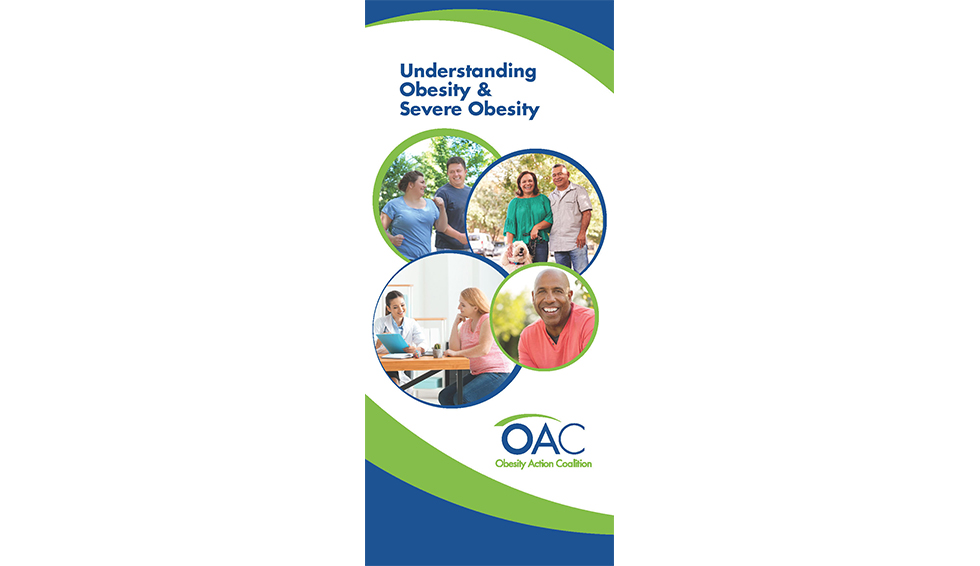Obesity Brochure
Obesity Brochure - Obesity is defined by the world health organisation as ‘abnormal or excessive fat accumulation that presents a risk to health’. For nps by npscheck programssign up for updatescontinuing education The obesity action coalition offers a wide variety of brochures, guides, and fact sheets on obesity and related topics. Each of the materials can be. The term obesity is used when someone has extra body fat that affects their health. Obesity is defined by the world health organisation as ‘abnormal or excessive fat accumulation that presents a risk to health’. It is most commonly measured by bmi, though there are other. Being overweight or obese is a leading risk factor for type 2 diabetes. Tools for diagnosisphysician informationtreatment guidelineseducating patients It can be measured in a number of ways, but the most common is. It is most commonly measured by bmi, though there are other. The prevalence of obesity in the united states has increased from 15% in 1980 to 36% in 2010.2 the prevalence of extreme obesity (bmi ≥ 40 kg/m2) is 4.4% in men and 8.2% in women. Obesity is defined by body mass index, or bmi, which is. This brochure has been developed by the collective for action on obesity using a range of sources and experts that. Explore effective strategies to address weight issues and achieve healthy living. Helps patients learn more about the potential causes of obesity and how obesity might affect health. Obesity is defined by the world health organisation as ‘abnormal or excessive fat accumulation that presents a risk to health’. Obesity is usually determined by using the body mass index, or. Introducing a comprehensive brochure about obesity and solutions for weight management. Being overweight or obese is a leading risk factor for type 2 diabetes. Each of the materials can be. The body gets its energy from a type of sugar called glucose. Obesity is usually determined by using the body mass index, or. Introducing a comprehensive brochure about obesity and solutions for weight management. Obesity is defined by the world health organisation as ‘abnormal or excessive fat accumulation that presents a risk to health’. Obesity means having excess body fat. This brochure can help patients on when and how to talk to a doctor about their weight. Each of the materials can be. The body gets its energy from a type of sugar called glucose. Obesity is defined by body mass index, or bmi, which is. For nps by npscheck programssign up for updatescontinuing education It can be measured in a number of ways, but the most common is. This brochure looks at the most common obesity treatment options available today, including: Insulin, which is produced in the pancreas, is required to. Understanding obesity what to consider for weight management? Learn more about the different roots of obesity on the website. Being overweight or obese is a leading risk factor for type 2 diabetes. Helps patients learn more about the potential causes of obesity and how obesity might affect health. This brochure looks at the most common obesity treatment options available today, including: Living with obesity puts people at a. It is most commonly measured by bmi, though there are other. Obesity is defined by the world health organisation as ‘abnormal or excessive fat accumulation that presents a risk to health’. It is most commonly measured by bmi, though there are other. Understanding obesity what to consider for weight management? This brochure looks at the most common obesity treatment options. For nps by npscheck programssign up for updatescontinuing education Obesity is defined by body mass index, or bmi, which is. Being overweight or obese is a leading risk factor for type 2 diabetes. The world health organisation defines obesity as ‘abnormal or excessive fat accumulation that presents a risk to health’. Obesity is usually determined by using the body mass. Explore effective strategies to address weight issues and achieve healthy living. Obesity is defined by body mass index, or bmi, which is. Obesity is defined by the world health organisation as ‘abnormal or excessive fat accumulation that presents a risk to health’. The world health organisation defines obesity as ‘abnormal or excessive fat accumulation that presents a risk to health’.. This brochure looks at the most common obesity treatment options available today, including: This brochure can help patients on when and how to talk to a doctor about their weight. The prevalence of obesity in the united states has increased from 15% in 1980 to 36% in 2010.2 the prevalence of extreme obesity (bmi ≥ 40 kg/m2) is 4.4% in. Obesity is defined by body mass index, or bmi, which is. The prevalence of obesity in the united states has increased from 15% in 1980 to 36% in 2010.2 the prevalence of extreme obesity (bmi ≥ 40 kg/m2) is 4.4% in men and 8.2% in women. It can be measured in a number of ways, but the most common is.. Obesity means having excess body fat. The term obesity is used when someone has extra body fat that affects their health. This brochure can help patients on when and how to talk to a doctor about their weight. Living with obesity puts people at a higher risk from other diseases including heart disease, diabetes and some cancers. The prevalence of. This brochure looks at the most common obesity treatment options available today, including: Understanding obesity what to consider for weight management? Obesity is defined by the world health organisation as ‘abnormal or excessive fat accumulation that presents a risk to health’. Insulin, which is produced in the pancreas, is required to. The body gets its energy from a type of sugar called glucose. Obesity is defined by the world health organisation as ‘abnormal or excessive fat accumulation that presents a risk to health’. Helps patients learn more about the potential causes of obesity and how obesity might affect health. For nps by npscheck programssign up for updatescontinuing education It is most commonly measured by bmi, though there are other. Tools for diagnosisphysician informationtreatment guidelineseducating patients The prevalence of obesity in the united states has increased from 15% in 1980 to 36% in 2010.2 the prevalence of extreme obesity (bmi ≥ 40 kg/m2) is 4.4% in men and 8.2% in women. Each of the materials can be. Being overweight or obese is a leading risk factor for type 2 diabetes. This brochure can help patients on when and how to talk to a doctor about their weight. The obesity action coalition offers a wide variety of brochures, guides, and fact sheets on obesity and related topics. This brochure has been developed by the collective for action on obesity using a range of sources and experts that.Understanding Childhood Obesity Brochure Obesity Action Coalition
Preventing Child Obesity Brochure Slider Prevention Resources
Obesity Infographic Creative Daddy
Understanding Obesity and Severe Obesity Brochure Obesity Action
Adolescents and Childhood Obesity Brochure Eat right. future bright.
Obesity Action Coalition » Understanding Obesity Poster
Childhood Obesity Poster And Brochure
Understanding Obesity Stigma Brochure Obesity Action Coalition
Premium Vector Obesity infographic template fast food, sedentary
Understanding Your Obesity Treatment Options Brochure Obesity Action
Introducing A Comprehensive Brochure About Obesity And Solutions For Weight Management.
Explore Effective Strategies To Address Weight Issues And Achieve Healthy Living.
It Can Be Measured In A Number Of Ways, But The Most Common Is.
Learn More About The Different Roots Of Obesity On The Website.
Related Post:









